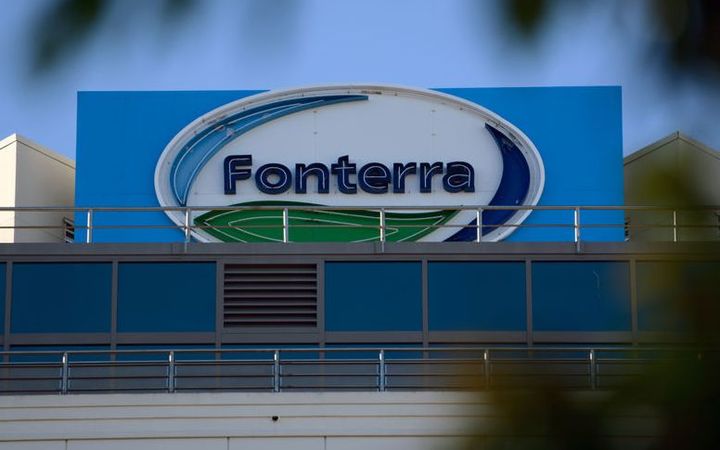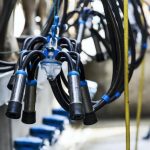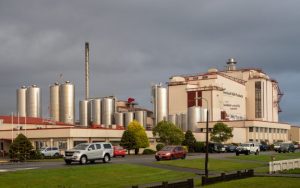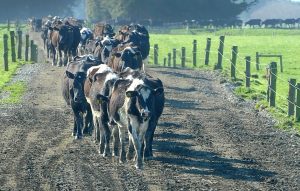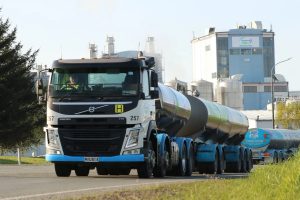
They are selling most international ventures off, rapidly shrinking their ambition, and focussing on basic ingredients rather than more capital intensive product lines. No apology for wasting two decades of near-monopoly position and the weight of that lost opportunity upon New Zealand.
Our largest business is in full retreat, although Fonterra calls these massive losses and global retreats a “strategy”:
New Zealand – and its government – need to engage much harder about Fonterra.
Why?
Since it clearly needs re-stating, Fonterra is a massive contributor to the New Zealand economy and to achieving the Government’s objectives for sustainable economic development. Fonterra is New Zealand’s largest business and the only New Zealand-based multinational firm with global scale and reach.
Our largest private entity has its profit and revenue streams captured in New Zealand by its New Zealand-based shareholders, unlike most other businesses of any size here. Reason enough for government to engage hard when that’s tens of thousands of New Zealanders with their welfare deeply tied to Fonterra’s rise and fall.
When it was merged, the government was advised that the entity would be a near monopoly accounting for about 7% of the entire GDP, around 20% of total exports, and 96% of dairy exports. They knew the collective national risk to us.
It’s still incredibly important to New Zealand.
The presence of Fonterra’s head office, innovation and manufacturing facilities in New Zealand have huge impact upon the wider New Zealand economy, society, and environment.
There is simply no question that there is a national interest associated with Fonterra and its performance.
But the question of how this national interest should be guided and protected is clearly not being grasped by this government. Only those with small imaginations fail to see how it could be done.
There was a time when government would lead by focussing all agricultural and food production business leaders together, with common funding and common goals.
Rural people see this, and I’m sure Fonterra’s fortunes are a factor in some of the worst business confidence levels and farmer confidence levels we have had in living memory.
Sure, there’s no political incentive for government to engage when they will probably not gain any more rural seats or rural vote. They’re throwing petrol on opinion that’s already on fire.
But.
Fonterra’s accountability for its strategy, structure and performance lies with its private owners, but the Government does have a critical role to play with Fonterra.
The first obvious area of engagement is with regulation and trade. Just summarising these set of levers shows massive areas in which engagement with Fonterra and government is so essential.
Regulatory Certainty and Outcomes
A basic job of government is to ensure regulatory certainty to enable Fonterra, its farmer-shareholders, and all other industry players to plan and operate in line with their chosen long-term strategic direction and environmental limits.
A useful example of this is the proposed regulations around fresh water and streams of August 2019. Fonterra thought they had good story to tell about this through the Dairying and Clean Streams Accord of 2003 between Fonterra, the Ministry for the Environment, the Ministry of Agriculture and Forestry, and regional councils. The new regulations would not have been needed if that 17 year old accord had worked. There’s some new instrument needed that prices environmental damage to dairy company profit besides regulation of farmers.
Fonterra itself is pretty clear why it needs to build its reputation about being good to our environment.
I’d be reasonably happy if the New Zealand government were able to produce a sustainability report about its own environmental impact as well as Fonterra does here.
A smart government could actually learn lessons from Fonterra – positive and negative.
Market Access
Protecting and enhancing international market access for New Zealand dairy exports. There’s no doubt the New Zealand government has tried, but over multiple international trade agreements most notably CPTPP there’s been limited improvement in forming the deregulated and de subsidised international milk market that would have enabled Fonterra’s production advantages to be really profitable. There’s been nowhere near enough return for the dairy industry despite all the negotiation effort. This is despite MFAT turning into practically the diplomatic arm of Fonterra.
Research and Development
Providing targeted research and development incentives to promote innovation and development of higher value added dairy products and market development opportunities has been weak and uneven. A few years back Fonterra had a thing called Fonterra Ventures, which sought active high value partnerships with universities. Commercialised successes were rare, and the government tax framework around research and development was cumbersome and ineffective for too long. An example is Foodspring through Goodminton AG: bought, then flicked 18 months later.
Another example is Fonterra’s recent sale of its 50% stake in DFE Pharma.
But it was evident from the first years of Fonterra that there was huge potential to improve the entire dairying sector through a comprehensive partnership with New Zealand universities. Hence, the Helen Clark government formed the Fast Forward Fund in 2006-7. This was intended to be a 50-50 multi-billion government-industry funded contestable fund for dairy pasture productivity, by encouraging deep research partnerships between dairy company research arms (at that time almost entirely Fonterra) and the Crown Research Institutes and universities. It was killed off by the 2008 National government. It would take an effort to resurrect something similar. The limited partnerships between Fonterra and CRI’s and universities have not turned New Zealand into a global powerhouse of nutritional research that they should have.
The above are the kind of engagement any decent government could make with Fonterra if it was trying. They could still do so, if they wanted.
What they have gone for is …
Legislation
This is of course the most forceful and effective form of government engagement with Fonterra. The Dairy Industry Restructuring Act 2001 allowed the creation of Fonterra Dairy Cooperative Group Ltd. The Act has the provisions to promote the efficient operation of dairy markets in New Zealand by regulating the activities of Fonterra to ensure New Zealand markets for dairy goods and services are contestable, even though in 2001 it was a near-monopoly.
I’m not going to bother summarising the changes to the DIRA Act that are going through parliament right now. Look them up if you want to.
Suffice to say that even Fonterra, and its Farmer shareholder council, were both disappointed it didn’t go far enough, and said so.
But wait ….
What I want to get to briefly is just some of the other areas this Government could really positively shape Fonterra and the other big dairy players if they wanted to.
Transport
Almost by chance, the Kiwirail effort to pull out of decline and into something with some heft has been good for Fonterra. Kiwirail is engaging with Fonterra about rail sidings beside major processing plants to enable as few as possible heavy trucks exiting site. I think there’s just one more Fonterra processor that’s not connected to rail in New Zealand, somewhere obscure in the Waikato. Kiwirail have also pushed ports to enable easier track and offload access for rail in and out for milk-industry trains.
But there’s so much more it could do. The biggest pressure to use trucks is of course that Fonterra are required to take all the milk that they are offered. The way to turn down the volume of milk trucks to Fonterra is to turn down the requirement that they always take milk from everyone all the time. Cabinet has ruled that out in the Bill.
Should the government want to, it could force Fonterra to think about how it wants that product delivered to Fonterra and to ports through transport costs. Larger dairy farms could be strongly encouraged to dry their own milk to powder and other core ingredients with smaller dryers on site. This could be done if the RUC for dairy transport vehicles was significantly increased. Government needs to look much more carefully about how to use an integrated NLTP to require Fonterra to use rail not road as the dominant form of bulk transport, price harder what it can’t get to rail, and pull the total volume of dairy products transported in the first place.
Starting to move out of coal is one thing; there’s a place for Government to lead Fonterra out of oil.
Skills and Immigration
According to Dairy NZ, the dairy sector needs around 5,000 new people each year. The New Zealand education system simply doesn’t generate enough of them, so it’s critical that they continue access to migrant employees.
Apart from on-farm worker supply, just imagine if a fully-firing Fonterra hovered up a great percentage of the food technology, food engineering, and nutrition graduates that we produce, rather than importing them. There are always exceptional anecdotes, but government through the tertiary sector has a much stronger role to play in inspiring people to graduate targeting dairy companies. Currently there is no such inspiration in Fonterra.
Tax
Dairy is the oil industry of New Zealand. It’s uniquely valuable to us, and represents a similar cost, risk, and opportunity to that of the oil industry to Norway. The proceeds of oil taxes and revenues to Norway’s dedicated fund have been massive. In time, the fund has decreased investment in oil and is diversifying. At the moment this government dances around the income dairy generates for New Zealand, and the special place it holds in the national income and national costs. According to the IRD it’s just another business. Fonterra can’t go anywhere, and is loading societal effects upon us all. So arguably it should have higher company taxes upon it to pay for its higher social license-to-operate. Arguably dairy needs a super-tax to transition us away from dairy.
Then there’s the question of how to further tax its supplier farmers. For example if a farmer had a spare $20,000 per year to invest, what tax incentive is there to discourage buying another vehicle or replace the barn roof, and encourage planting a 2km riparian strip with 5 metres of native plants? This years’ Tax Working Group would have been a better place to put that question, rather than through more oblique means like water quality regulation. Incentivising where you put your own money is always more effective than penalising.
Innovation
From the 2001 Cabinet paper, a key risk that troubled Cabinet concerning innovation has been borne out.
The proposed merger’s main risks were that “the continued under performance of innovation, including the evolution of new and higher value products, through insufficient diversity and competition in the production, marketing and exporting of New Zealand dairy products”.
Whatever innovation they were investing in simply hasn’t had rewards. In 2018 the Fonterra annual report showed that the farmgate milk price had fallen 20.4% since 2014, and the co-op’s dividend was the same in 2018 as it was in 2014, and its shares had a dividend yield of only 1.7%. The co-op’s share price continues to decline. And of course, A2 Milk and Synlait have soared in multiples over the same period.
Fonterra is now in no mood for expansive and expensive innovation. As Fonterra retrenches, so does its R&D programmes that focus on higher value products. It is of course always fraught for a government to pick sectors it wants to dedicate particular chunks of R&D funding to. It doesn’t need to. But it is proposing to restructure all polytechs, and has had to rescue many existing rural polytechs from death. Government could at least incentivise universities to ask and asnwer the question: what can universities and polytechs do to give us the highest-value and lowest-impact dairy industry in the world? Ask sectoral questions like that, and pretty soon everyone will want one. That is the job of government.
Focus
As far as the eye can see, dairy is here to stay in New Zealand as a powerful part of our economy. Fonterra’s size and its massive retrenchment will impact upon farm businesses and upon every town and city in which Fonterra has a large presence. You get a tiny sense of things to come from Kapiti.
That means that the national interest of government engaging with Fonterra should change as well.
In previous years, there was great optimism, as in Dairy NZ’s DairyTomorrow site.
Back in the day, with a fully sectorally engaged government, there were massive cross—government long term initiatives that engaged dairy as part of the food and beverage sectors.
Such optimism and sectoral engagement are a distant memory now.
It shouldn’t be.
There are far more levers this government can operate around Fonterra than it does. It’s highly likely that for the foreseeable future, Fonterra doesn’t have the strength to rise itself up again.
Fonterra needs a cross-government plan that prepares for the negative impact of its current decline and contraction, for the massive social, economic and environmental costs and opportunities that it generates within New Zealand, and for a future that turns Fonterra and the dairy industry into a greater success in the interests of New Zealand.
What is needed is a government prepared to lead the dairy industry, using everything it has.
